Candidate Resources


Gaining a competitive edge in your job search requires expert guidance and strategic planning. In this blog, we share advice on how to develop an effective job search strategy, craft the perfect CV and ace your interview to land your next role. Developing an Effective Job Search Strategy A strategic approach to job hunting can significantly enhance your success rate: Target Relevant Roles: Focus on positions that align with your skills, experience and career goals. Look for roles where your transferable skills can be an asset. Be Selective with Applications: Avoid the temptation to apply for every job you see. Tailor your applications to positions you’re genuinely interested in and qualified for. Stay Organised: Keep track of the jobs you’ve applied for, including details about each application. This will help you stay prepared for when the recruiter or hiring manager calls and any follow-ups. Crafting the Perfect CV Your CV is your first chance to make a lasting impression. Here’s how to craft a standout CV: Understand the Role: Before writing your CV, carefully read and analyse the job description. Identify key skills and qualifications the employer is seeking. Tailor Your CV : Customise your CV for each job application. Highlight relevant experiences and skills that match the specific role you’re applying for. Include a Strong Cover Letter: Write a compelling cover letter that explains why you’re a perfect fit for the role. Use it to provide context for your CV and showcase your enthusiasm for the position. Mastering the Interview Securing an interview is a significant achievement, but nailing it is crucial. Here are some essential tips to help you excel: Be Honest: Authenticity is key. Employers appreciate genuine responses and transparency. Be Confident: Confidence can set you apart. Practice your answers and maintain a positive attitude. Stay Calm: Manage your nerves by taking deep breaths and staying focused. A calm mind leads to clear, concise answers. Prepare Thoroughly: Research the company and the role. Prepare questions to ask the interviewer about company culture, learning and development opportunities, and what they expect from you in this role in the coming months. Listen and Respond Thoughtfully: Pay close attention to each question. Take a moment to gather your thoughts and provide well-considered answers. Use Specific Examples: Back up your claims with concrete examples from your experience. This adds credibility to your responses. Maintain Professionalism: Dress appropriately, smile and make eye contact. Professionalism leaves a lasting impression. Be Punctual: Arrive early (but not too early!) to demonstrate your commitment and respect for the interviewer’s time. Additional Tips for Job Seekers Network Actively: Connect with industry professionals and attend networking events. Personal connections can open doors to unadvertised opportunities. Maintain a Positive Attitude: Job searching can be challenging, but staying positive is crucial. Celebrate small wins and keep pushing forward. Follow up: After an interview, send a thank you text or email. This simple gesture can set you apart from other candidates and reinforce your interest in the role. Mastering your job search is all about preparation, strategy, and persistence. Implementing these strategies will put you well on your way to securing the role you desire. Best of luck in your job search! Find out more about Our Services or get in touch with one of our Consultants .

Health and Safety in the workplace is paramount for both employers and employees. Under the Health and Safety at Work Act 2015, employers are legally obligated to maintain a safe and healthy work environment. This encompasses identifying and mitigating risks, offering proper training, and supplying necessary safety equipment, including PPE. Employers must take proactive measures to create a hazard-free workplace, ensuring the well-being of their employees. A common question that often arises is whether employees are required to pay for their own Personal Protective Equipment (PPE). Paying for Your Own PPE: When Is It Required? The default answer to the question of whether employees should pay for their own PPE is no! In most cases, it is the responsibility of the employer to provide PPE to ensure that employees can work safely. However, there are some exceptions to this rule: Personal Preference Some employees may have personal reasons for wanting to use their own PPE, even if the employer provides suitable gear. For example, they may prefer a particular brand or supplier or want additional items to what is being provided. In such cases, employees can choose to purchase their own equipment. PPE Return Agreements If an employee fails to return the PPE provided when they finish their job or employment, the employer may have the right to request the employee to reimburse them for the equipment. This should be clearly stated in an agreement made before commencing the job. Damage or Negligence If an employee intentionally damages the PPE or behaves negligently, causing damage to the equipment, the employer may require the employee to cover the cost of replacing the PPE. This, too, should be outlined in an agreement before issuing any PPE. To sum it up, employers are required by law to offer a safe working environment, which includes providing appropriate PPE. Employers should not expect employees to bear the financial burden of their safety equipment, nor should they require employees to purchase PPE from the employer before starting a job. As an employee, if you have concerns or questions regarding PPE in your workplace, it's essential to communicate with your employer. If you find yourself in a situation where you are compelled to pay for your PPE, don't hesitate to seek advice or clarification. The primary goal is to ensure that all workplaces are safe for everyone, and this is a joint responsibility shared by employers and employees. For further information or questions about your legal obligations or aspects of employment law, feel free to reach out to our Tech 5 employment law specialist, John Dustow. JOHN DUSTOW – E: johnd@tech5.co.nz | P: 027 855 9989

In today's fast-paced world, mental health awareness is no longer just a buzzword; it's a crucial aspect of a healthy and productive work environment. Employers are increasingly understanding that a mental health diagnosis is a recognised illness within the employment sector, and they have a responsibility to ensure their employees' mental health needs are reasonably met. In this blog, we'll delve into why employers must recognise and address mental health in the workplace, along with key steps to promote a mentally healthy work atmosphere. Employer Responsibility under Health and Safety Legislation: Employers have a legal responsibility under the Health and Safety at Work Act to minimise harm in the workplace, and this includes mental health harm. When an employee comes forward with mental health concerns, employers should approach the situation with an open mind, empathy, and kindness. It's their duty to do what is reasonable to address these concerns and create a supportive work environment. By doing so, employers not only fulfil their legal obligations but also foster a culture of trust and well-being. Identifying the Sources of Mental Health Problems: Mental health issues and challenges can stem from problems within the workplace itself or things that are unrelated or external to the workplace. Stress and burnout - driven by heavy workloads and demanding deadlines - are prevalent challenges. Additionally, workplace bullying and harassment can be detrimental to mental health. Genuine anxiety around meeting targets can also contribute to mental health problems. There is a vast range of issues outside of work that can also cause mental health issues that impact our ability to work, and an employee who is overwhelmed with emotional issues at home may have trouble prioritising and staying focused at work. Regardless of whether issues arise from an employee's personal life or stem from their employment, it is difficult for an employer to address and remedy things affecting their employees if they don’t know about them. By communicating your struggles, where possible, the employer can proactively address and mitigate them, or provide appropriate support. Encouraging Open Communication: An atmosphere of open communication is essential for addressing mental health concerns. Employers should encourage employees to feel comfortable being open, honest, and communicative about their mental health. It should be made clear that if something at work is disturbing their mental health, they must promptly raise these issues with their employer. Transparent communication is essential to finding solutions. Employers should also encourage professional help so employees can receive an accurate diagnosis, ensuring they receive the proper support and accommodations tailored to their needs. In conclusion, employers have a significant role in recognising and supporting mental health in the workplace. By understanding the legitimacy of mental health diagnoses, identifying potential sources of stress, fostering open communication, and fulfilling their responsibilities under the law, employers can create a work environment where mental well-being is a priority. By working together, employers and employees can build a workplace that values mental health, fostering trust and confidence while promoting overall well-being.

As an employer, it is essential to understand your obligations regarding break times at work. All employees are entitled to their statutory breaks, and failure to provide appropriate break times can lead to burnout and decreased employee productivity, impacts health and safety protocols, and even has legal repercussions for employers. When establishing what break times an employee should get, there needs to be an agreement between the employee and the employer, for example, break allowances written into an employment contract. If there is no agreement, employers must adhere to the timings described in employment law. In all workplaces, it is best to come to a reasonable compromise between you and your employer. Despite break times being important for employee wellbeing and a legal requirement, we sometimes see a trend of insufficient break times being provided to workers in specific industry sectors, so let’s take a closer look at the key aspects of break time regulations and what employers should know to comply with the law: 1. Meal Breaks vs Rest Breaks The first thing to understand is that there are two types of breaks: meal breaks and rest breaks. Meal breaks are typically longer and are meant to provide employees with time to eat a meal. For most, these are unpaid. In contrast, rest breaks are shorter and intended to provide employees with a brief rest from work. These rest breaks are paid breaks. 2. Length of Breaks According to the New Zealand Employment Law, you should receive the following break/meal times: 4-6 work hours = 1 x 10 minute break (paid) and 1 x 30 minute meal break (unpaid) 6-10 work hours = 2 x 10 minute break (paid) and 1 x 30 minute meal break (unpaid) 10-12 work hours = 3 x 10 minute break (paid) and 1 x 30 minute break (unpaid) 12-14 work hours = 3 x 10 minute break (paid) and 2 x 30 minute meal breaks (unpaid) 3. Penalties for Non-Compliance Finally, it's important to understand the penalties for non-compliance with break-time regulations. If an employer is not providing appropriate breaks, their actions can result in a personal grievance resulting in Penalties of up to $20,000 per breach. Furthermore, if there is an accident on site and this accident can be fully, or partially attributed to noncompliance with break requirements, the employer could face prosecution under the Health and Safety at Work Act which carries a potential term of imprisonment. Breaktimes are a legal right for all employees. If you’re one of our Tech 5 employees and are not getting the appropriate breaks on your placement, raise it with your immediate supervisor. If that doesn’t work, then escalate the issue to your Tech 5 consultant. If you’re not a Tech 5 candidate, contact your union delegate or a suitable employment law representative. For information or questions about your legal obligations or rights regarding break times or any other aspects of employment law, feel free to reach out to our Tech 5 employment law specialist, John Dustow. JOHN DUSTOW – E: johnd@tech5.co.nz | P: 027 855 9989


